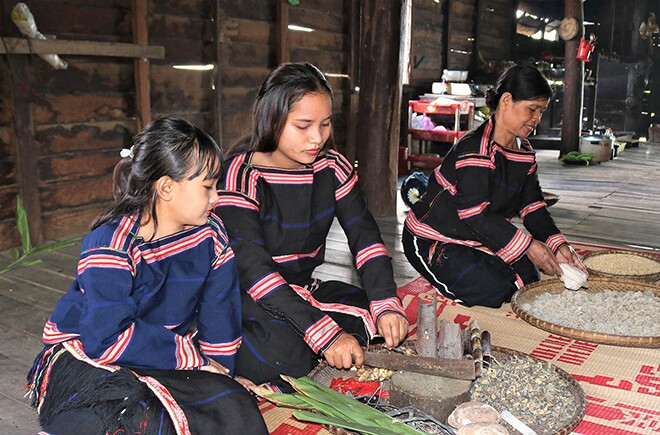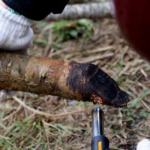Among the various Lunar New Year celebrations, Tết Nguyên Đán is the most widely recognized. It marks the first day of the new year according to the lunar calendar and is steeped in traditional customs and spiritual beliefs. The festive season is filled with joy and hopes for a prosperous new year.
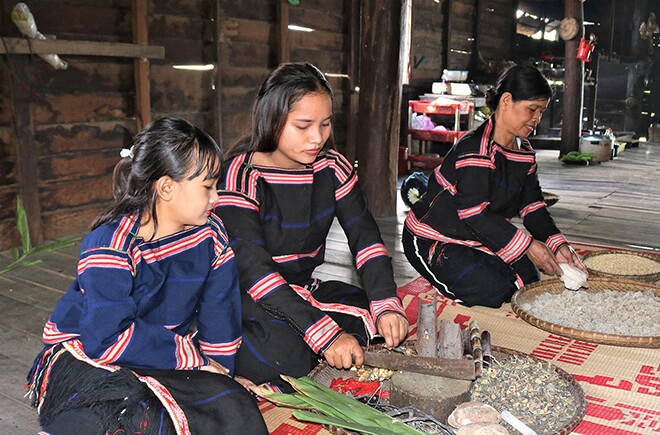
While in the lowlands, Tết arrives with the gentle spring rain and the first rays of sunshine breaking through the clouds, bringing with it the golden hues of a new year, for the Jrai people, it holds a different significance. The Jrai are one of the oldest ethnic groups residing in the mountainous regions of Tay Nguyen (Central Highlands). According to the 2019 census, there are approximately 513,930 Jrai people, mainly concentrated in the provinces of Gia Lai, Kon Tum, and Dak Lak, with a small population in Binh Dinh.
The “Forgotten” Month in the Jrai Calendar
The rich traditional culture of the Jrai people has resulted in a unique celebration of Tết Nguyên Đán. They follow an agricultural calendar with 12 months. The end of the dry season and the arrival of the first rain mark the beginning of their new year, which falls around April in the Gregorian calendar. Therefore, the first rain holds great importance and usually occurs in April. Their 12th month (Chạp) corresponds to March in the Gregorian calendar.
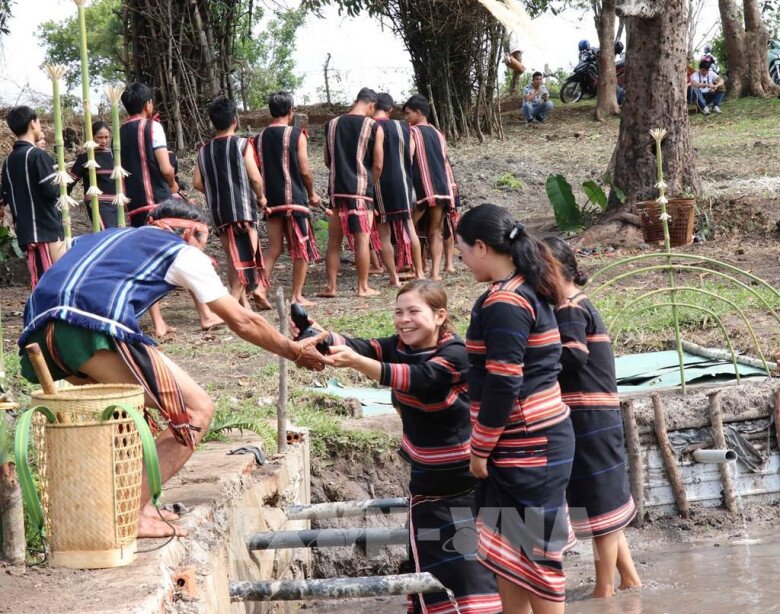
In the Jrai calendar, the first ten months are numbered from one to ten, while the last two months have specific names: Ninh Nung and Wor. Ninh Nung symbolizes forest animals and stream fish, and it is when people prepare delicious food for the festivities. Wor, also known as the “Forgotten Month,” is a time for the Jrai to take a break from their agricultural work and prepare for new beginnings.
As the last month of the year approaches, marked by the arrival of March in the Gregorian calendar, it also signals the beginning of the honey-gathering season. The Jrai people start their preparations for Tết Nguyên Đán.
Celebrating Tết Nguyên Đán in April
The Jrai people celebrate Tết when nature is in harmony, and the heavens converge. The Central Highlands are refreshed by the first rains, the trees are lush, and the red basalt soil settles, making the climate more pleasant.
While April is the common Tết month for the Jrai, the exact date of celebration varies from family to family and from village to village. Without a specific New Year’s Eve, the Jrai people’s Tết customs are uniquely distinct.
Offerings and Traditional Dishes
The Jrai people meticulously prepare offerings to welcome the new year. If they use animals for sacrifices, these are carefully tended to, and the host performs a small ritual to ask for the blessings of the spirits. During Tết, the Jrai people drink ruou can (rice wine), which is fermented in large earthen jars using natural ingredients. The longer the wine ferments, the better it tastes, and in some places, it is aged for up to a year. The unique brewing process of the Jrai people results in a sweet and mild-tasting wine.
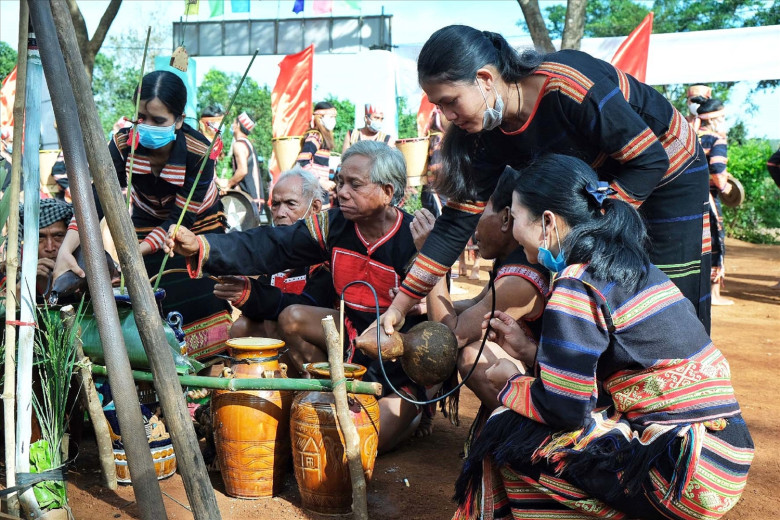
Unlike other cultures, the Jrai people do not make bánh (cakes) for Tết but focus on com lam (sticky rice cooked in bamboo tubes) and other traditional dishes. The main dishes include grilled meat, phèo (a type of sausage), canh bí nấu xương (squash soup with bones), and oái (a mixture of pork and corn powder). Notably, the feast also includes nhăm tơ-pung, a porridge made from finely ground rice mixed with meat and vegetables or jackfruit fibers.
During the Tết month, anyone in the neighborhood hosting a feast is joined by their neighbors, whether invited or not. Guests bring food or rice to contribute to the feast. The community spirit and unity of the Jrai people are evident as they share meals and drinks together, never drinking alone.
The Significance of Tết Nguyên Đán for the Jrai People
Before partaking in the feast, a shaman invites the gods and ancestors to join in the celebration. When leaving, guests are gifted a piece of meat or some food, symbolizing wishes for a prosperous and abundant new year.
After the Tết month, the Jrai people enter a new agricultural season with a ceremony led by the village elders, praying for a bountiful harvest and favorable weather.
Even though the Jrai people’s Tết Nguyên Đán does not coincide with the Vietnamese celebration, they still take the time to visit their relatives and neighbors, exchanging well-wishes. Interestingly, the Jrai people get to celebrate two new years, doubling the joy and festivities.
The Ultimate Guide to Year-End House Cleaning: Uncover the Secrets of “3 Don’t Keep, 4 Don’t Touch, 5 Must-Sweep” for a Prosperous New Year
The end-of-year cleaning is more than just a routine; it is a symbolic ritual of sweeping away the bad luck and inviting in good fortune. So, when you’re tidying up your home to welcome the new year, remember the rule of “3 don’t keeps, 4 don’t moves, and 5 must sweeps” to ensure prosperity and luck for the coming year.

























